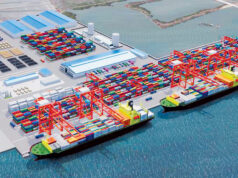State of the Philippine real estate
The country’s economic boom shows no signs of slowing down. Considered as one of the fastest-growing economies in the region, it exhibited an increase in gross domestic product (GDP) by 6.7% in 2017. This robust macroeconomic condition continues to pave the way for different sectors to further flourish, including that of the real estate.
The real estate industry’s steady growth in the past decades is attributed to the increase in demand for residential and commercial properties driven by various factors. These demand drivers, according to a report by Leechiu Property Consultants, include rising urban population growth; housing needs of BPO (business process outsourcing) employees, since a growing number of these workers need to live near their workplace; and remittances from overseas Filipino workers (OFWs), more than half of which are real estate-related.
Oxford Business Group (OBG) stated in a 2017 report, “Years of investment and strong economic development in the Philippines have fostered a robust real estate sector that now extends outside of the greater Metro Manila region and into secondary markets around the country. Economic development and a growing middle class continue to fuel demand for new, high-grade residential units, while commercial investment drives an ever-increasing amount of retail and office space.”
The bullish performance of the country’s real estate sector is projected to further thrive in the years to come. The OBG report continued, “Buoyed by a strong macroeconomic environment, cash-laden investors and a full pipeline of projects scheduled to be built over the next decade, the real estate sector will continue to exhibit strong growth in the coming years. A steady stream of new residential and mixed-use projects is under way at locations across the Metro Manila area, as well as other fast-growing secondary cities around the country.”
Real estate consulting services firm Colliers International also shared the same outlook in a December 2017 report, which stated that opportunities abound for the property sector this year.
“Colliers encourages developers to take advantage of opportunities that could arise from the implementation of government policies such as the Comprehensive Tax Reform Package; relaxation of foreign ownership restrictions on retail and construction; and amendments to the existing procurement law and business registration systems which should entice more developers to take part in the government’s ambitious infrastructure development program,” the firm said in the report.
Colliers sees that the improvement of road networks and expansion of airports in major urban areas in the country will further unlock land values, making it more feasible for residential projects.
Moreover, Colliers said that the demand for residential units in these locations would continuously grow, as OFWs will continue to set aside part of their remittances for housing requirements.
“Colliers expects developers to continue venturing into residential projects in second-tier and third-tier cities all over the country, where demand primarily comes from end-user buyers. The markets may be smaller compared to Manila but more stable in terms of end user housing demand,” the report continued.
On the other hand, the firm predicted that there will be less of office launches following the decline in BPO companies’ office space demand. However, there will be a greater demand for flexible office spaces over the near to medium term given that there are 1.3 million freelancers in the Philippines, and as mobility, connectivity, and flexibility is becoming the norm.
Opportunities are also seen in the popularity of e-commerce, which is expected to drive warehousing and logistics demand. According to Colliers, this particular demand will particularly propel the economy of Northern and Central Luzon especially because of Clark Airport’s planned expansion and the construction of the Subic-Clark cargo railway.
Northern and Central Luzon is also set to be an industrial hub as major developers are developing industrial parks, which is foreseen to increase industrial lease rates especially in areas such as Cavite, Laguna, and Batangas.
Not only industrial parks are going outside Metro Manila. Colliers said that townships are also projected to rise in areas such as Cavite, Laguna, Bulacan, Pampanga, Cebu, and Davao over the near to medium term as land values are being unlocked by an aggressive expansion of road networks anchored on the government’s initiative to generate economic opportunities outside Metro Manila.
The increasing tourist arrivals in the country also open more possibilities for the real estate sector. In terms of hotels, it is seen that three-star and four-star hotels in resort destinations will be more visible in the next two to three years with Cebu, Bacolod, Iloilo, Palawan, Davao, and Bohol as among the most attractive locations for these developments.
Cebu, in particular, experiences a continued surge of tourists resulting to an increase in occupancy rate as well. Seeing the rising attractiveness as a tourist spot and growing competitiveness as an investment destination, Colliers encourages industrial locators in Visayas to consider this province.
Moreover, to cater to the growing domestic market driven by millennial travelers, Colliers encourages investors to build more budget hotels.
Meanwhile, for the retail segment, Colliers said that malls will still be an important part of the Filipino lifestyle and will continue to attract consumer traffic, thus, are encouraged to provide more lifestyle amenities that generate a sense of destination. — Romsanne R. Ortiguero



